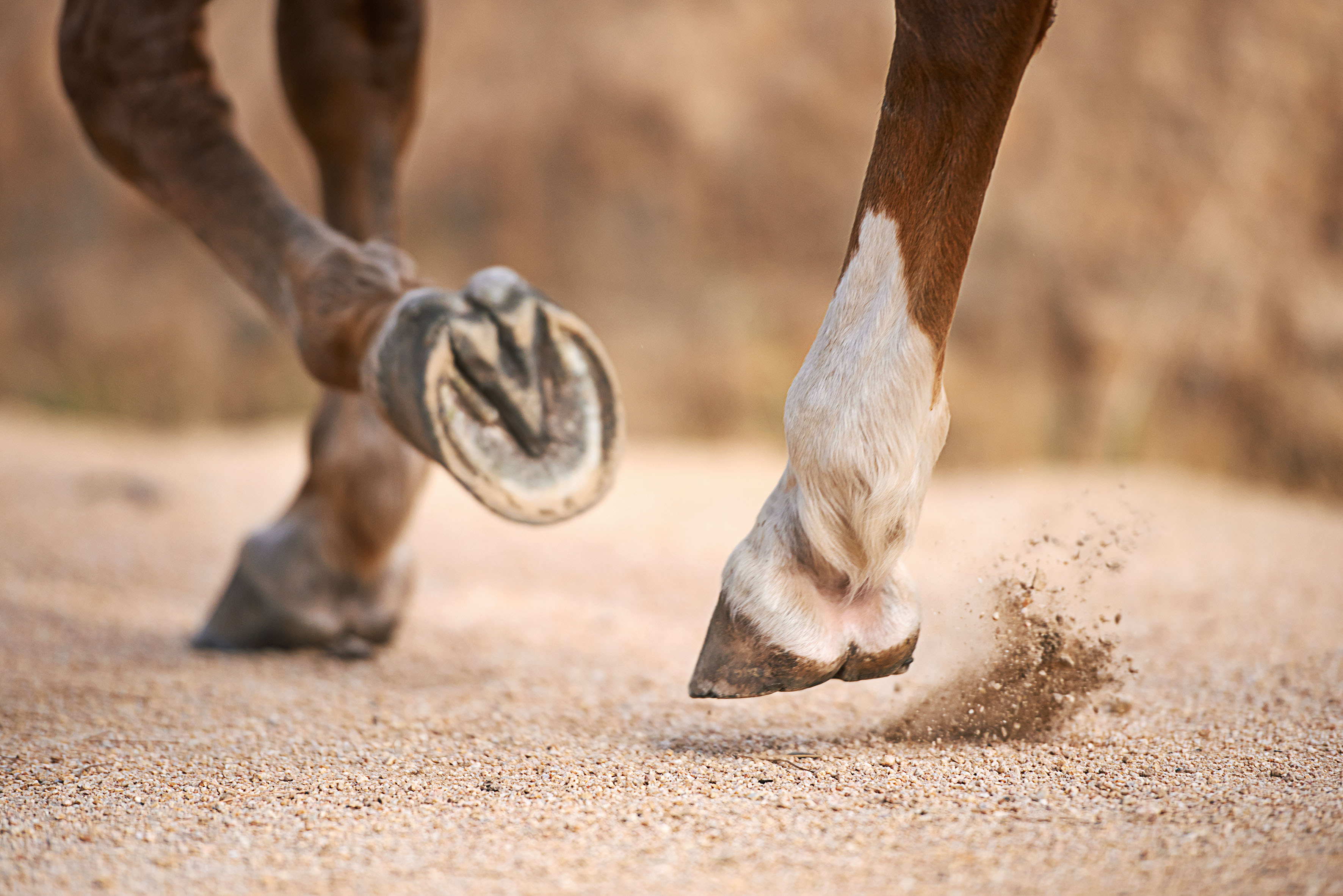Laminitis is a painful condition in horses that can develop gradually over time. It occurs when the laminae—the sensitive inner structures of the hoof become inflamed and start to separate from the hoof wall. This leads to changes like laminitis rings on the hoof. This inflammation can cause discomfort, lameness, and, in severe cases, permanent damage. Although laminitis is commonly seen in the front feet, it can also affect the hind feet.
Recognizing the early warning signs of laminitis is crucial for horse owners. Identifying these signs allows for timely intervention and proper care, preventing the condition from escalating. This blog will explore 14 signs of laminitis to help you protect your horse’s health and ensure their comfort.
Early Warning Signs of Laminitis
Below are the early symptoms you can recognize to help prevent equine laminitis:
1. Strong Digital Pulse:
When you place your hands on the digital artery along the back of the limbs, a normal horse has a weak or faint pulse. However, if you feel a strong, bounding, or throbbing pulse in both limbs, it could indicate horse laminitis.
2. Hot Hooves
It's not unusual for a horse's hooves to feel warm for a few hours, especially in high temperatures. However, this is one of the signs of laminitis, as the hooves remain hot for several hours, even in cooler conditions.
-
Distorted Hoof Shape
Typically, a horse's hoof grows faster in the front and slower on the sides, creating smooth, evenly spaced growth rings on the hoof wall. In a laminitic horse, this growth pattern changes, causing uneven, wider, and abnormal growth rings known as laminitis rings on the hoof. Abnormal hoof growth starts before the laminae are severely affected, and the condition becomes full-blown laminitis.
4. Increased Heart Rate
Most horses have consistent heart rates, around 30-40 beats per minute in the resting stage. Heart rate can be measured with a stethoscope or felt under the jaw by feeling the pulse or above the digital artery in the limbs. An increase in heart rate can be a significant indicator that the horse is uncomfortable and an early indicator of laminitis. However, increased heart rates due to exercise, excitement, and high ambient temperatures must be considered while interpreting.
5. Too Much or Too Little Foot Lifting
Movement is crucial for hoof health as it promotes blood flow to hoof tissues. However, if a horse bears weight on one leg for too long due to injury, it might lead to "supporting-limb" laminitis. On the other hand, a horse that frequently picks up its feet might be exhibiting early signs of laminitis in horses.
6. Stretched or Bleeding Laminae
A stretched laminae is when it starts getting detached from the hoof wall, and this can be observed as a gap along the white line where the sole and hoof wall meet. Further, if there are blood spots along the white line, it is a sign of laminae bleeding and laminitis.
7. A Shortened Stride
A laminitic horse often shortens its stride before showing obvious lameness, particularly on hard surfaces. Knowing the horse’s typical stride is essential to recognizing the shortening of steps. The horse also shows signs of pain, such as pinning of ears or reluctance to move.
8. Increased Insulin Levels
Insulin, a normal hormone that regulates blood sugar, also activates a particular growth factor in the laminae, causing it to grow. Growth of laminae is undesirable and not a regular thing, for they are not supposed to grow. When the vet checks, an insulin level should usually show 20 units or less. If it's over 40, action must be taken to bring it down before laminitis hits.
9. Obesity
Obese horses’ feet bear more weight, which causes stress, contributes to mechanical changes in the hoof's shape, and could cause the hooves to grow abnormally. This excess weight also causes stretching of the laminae. When the horse is overweight, it's crucial to monitor feeding practices, reduce the horse’s calorie intake, and increase exercise.
10. Diarrhea, Infection, or Inflammation
A horse experiencing high fever and diarrhea is at an elevated risk of developing equine laminitis due to enzyme reactions in the feet. In such cases, it's crucial to pack the horse's feet in ice to prevent the condition from developing.
11. Metabolic disorders:
Fat deposition indicates underlying metabolic disease, especially in areas such as on the top of the neck, on the rump, or behind the shoulder. An overabundance deposition of adipose tissue or fat in the neck area, also called a crested neck, is a strong indicator of Equine Metabolic Syndrome (EMS). Due to increased insulin levels and chronic inflammation in an EMS-affected horse, they are at risk of developing laminitis.
12. Fungal or Bacterial Infections of Toes
Laminitis in horses can sometimes be associated with infections like white-line disease. These infections, often resulting from mechanical issues such as overgrown toes, are vital warning signs of subclinical laminitis.
13. Frequent Hoof Abscess
Frequent hoof abscesses are a warning sign of an underlying condition such as laminitis. Abscesses result in extreme pain and lameness and are relieved only when the abscess finds an exit tract and drains.
14. Reluctance in Turning
A horse that can walk easily in straight lines but struggles to turn could be showing signs of laminitis. Horses with laminitis often struggle to move in circles and exhibit lameness when turning.
Final Words:
Paying attention to the early signs can help prevent the development of equine laminitis, subsequent lameness, and other irreversible ailments. Preventing laminitis also involves providing balanced nutrition and supporting the horse’s metabolic health.
By understanding the abovementioned signs, horse owners can take the required steps to prevent long-term damage. Lastly, watching for early signs like laminitis rings on the hoof can impact your horse’s health.
Support your horse's overall health with Med-Vet Pharmaceuticals’s specially formulated metabolic health supplements. Call us at 833-809-4848 or contact our team to give your horse the best care possible!

